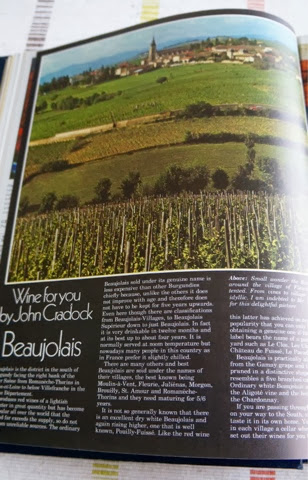This part is rammed full of hints, tips and tricks to successful casseroles as you'd expect. However I am filled with regret at not tackling them, not for the skills or the tastes but as Fanny herself has supplied some of the very best innuendos and puns to go with this collection. I am missing making Fanny's Cod Casserole ('a peak of culinary lunacy'), learning how to make and store faggots (of herbs) and best of all I will never know how to stiffen my prepared meat.
Fanny clearly loves meat and clearly loves casseroles. She goes to great lengths to encourage readers to love it too. For me, however, this 'before and after' platter of Oxtail with 'amusing presentation' - including a cauliflower to replace the brain - which Fanny claims is copied from the many stalls she has seen in the open markets in Tours, is simply a step too far... I can't see how I could recreate that with soya-based items. What would Linda McCartney think?
In what seems like a minor irritation to Fanny, Johnnie introduces us to the wonders of Beaujolais, both red and white varieties. Johnnie urges us to try some, especially if you are 'passing through the district on your way to the South' where you can try it in its true home. He even supplies a wonderful photo to inspire us to make the trip. I wonder if he was day-dreaming of escaping for a while as he wrote it?
In truthfulness, there are a few recipes I could adapt happily, but they seem a little strange. Sausage and Rice casserole cooked in milk? French Yorkshire Puddings? And the weirdest Irish Stew I have ever seen, in presentation terms at least.
So I am missing out on the world of casseroles and missing out on some world class innuendos, but Fanny also leaves us with some visual puns too. I am not too sure they'd be terrifically pleased in Sweden with her presentation of this Birds Nest of chives, capers, onions, anchovies, potatoes and eggs, delicious with dark rye bread and butter apparently, but it made me smile.









































